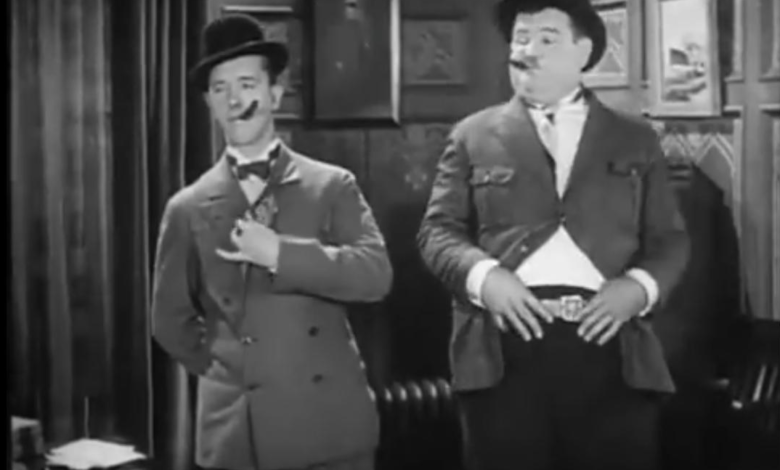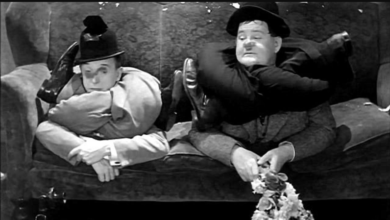Watching the Detectives Laurel and Hardy – Do Detectives Think? (1927). This one is the real thing…

Yes, it’s all here at this point. Laurel and Hardy provide nearly all the laughs in this film and, unlike the earlier Duck Soup, they get the laughs standing next to one another, playing off one another. The laughter is in the space between them. While earlier films involve these characters being funny in the same movie, or even the same scene, in this film they are funny because they are together.
A psychopathic killer called “The Tipton Slasher” is sentenced to be strung up by Judge James Finlayson. The killer (Noah Young, in the sort of role that would later be played by Walter Long) swears he’ll kill the judge if it’s the last thing he does. Sure enough, he escapes with just one purpose in mind. The judge’s wife phones a detective agency for some personal protection and it turns out that Stan and Ollie are the only agents on offer. After some preening and foolery in the office, the pair perambulate over to the judge’s house, walking past a cemetery on the way, a circumstance that makes for a deal of spooky fun involving shadows. In the meantime, the killer has intercepted the new butler on his way to the judge’s house,stripped him of his butlerian garb and now presents himself as the new butler. When Stan and Ollie eventually arrive, Ollie attempts to demonstrate his sharp-shooting prowess before they are tucked up in bed by killer butler.
Astonishingly, James Finlayson doesn’t recognise the killer at all. Ollie eventually figures out, with the assistance of an enormous newspaper photo, who is who while the killer searches the judge’s bathroom and James Finlayson struggles to remain underwater as a means of hiding. There’s a deal of running, some predictable confusion with handcuffs, a moment where a seemingly decapitated Stan is running around like the proverbial chicken. Eventually, a combination of bed sheet and mask converts James Finlayson into a sort of phantom which in turn converts the killer into a blubbering mess. It seems to be a rule that the more brutal an assailant in a Laurel and Hardy film, the more gullible and superstitious he’s likely to be. With the killer in a locked cupboard (along with Ollie), the police arrive and there’s just a moment for a repetition of wrong hat play before this deft little comedy concludes.
This film does a number of things that only a silent comedy can do. The introduction of sound would have made some of the scenes, like the bathroom scene with Young and Finlayson, incredible. In a silent movie, Finlayson can splash around as much as he likes without attracting undue attention. Sensory deprivation allows people to creep up on one another in a more satisfying way, and allows people to be forced together in unexpected and elaborate fashions. Laurel and Hardy triumphed as both silent and sound comedians, of course, and Do Detectives Think? anticipates a lot of their best work as silent stars.
James Finlayson, who was as adept at a visual double take as he would become with a “D’Oh!” is of great assistance in this respect.





